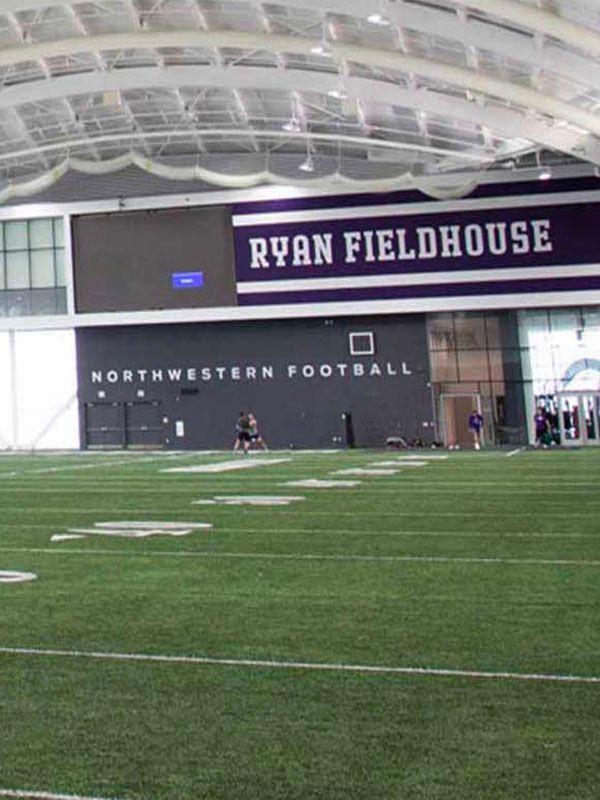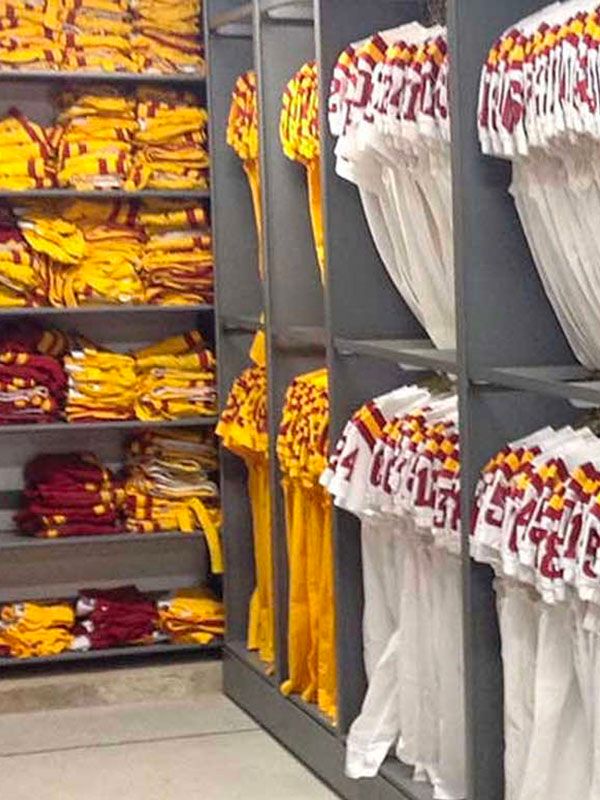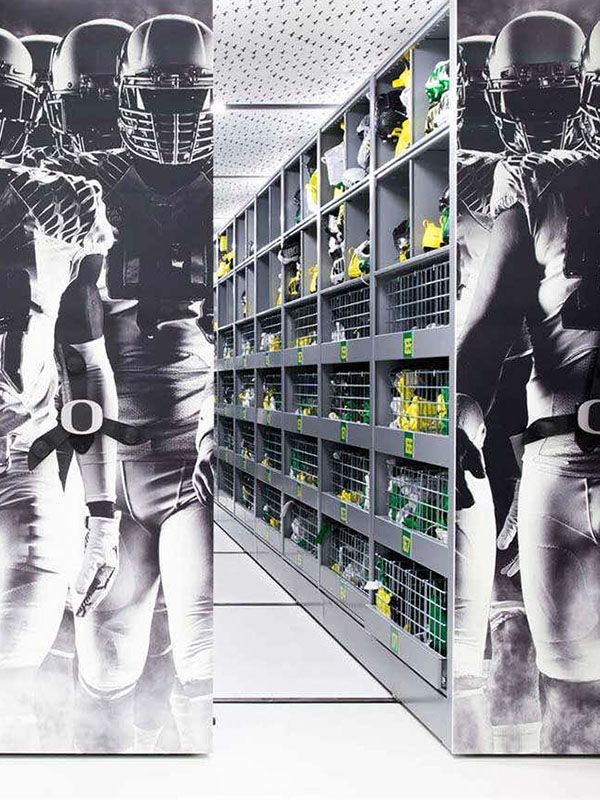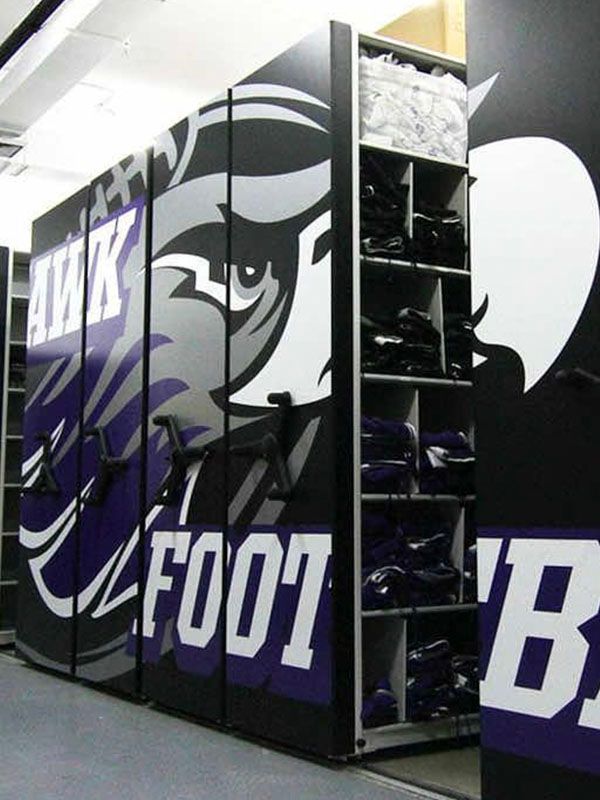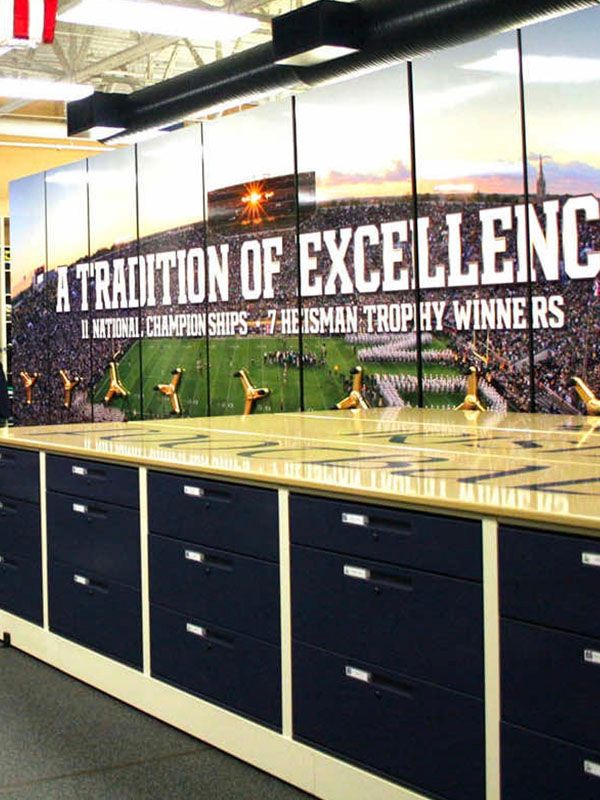Stanford, California
Smart Storage for Stanford Athletics
Quality products and a detailed storage plan create a brilliant solution
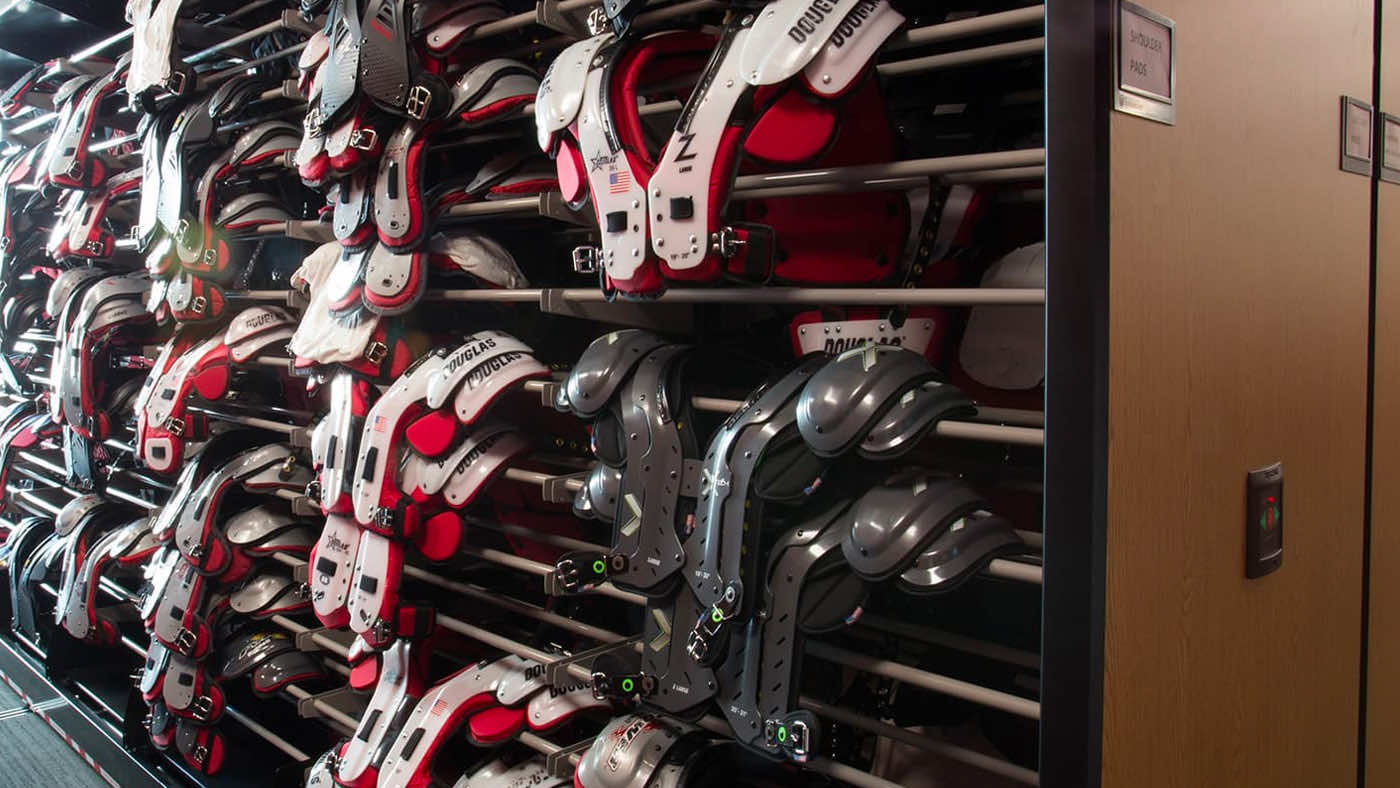
Busy athletes and staff need safe, accessible, and well labeled storage. An inaccessible or disorganized storage system quickly degenerates into no system at all.
Disorganized storage was leading to frustration and wasted time at Stanford University’s main athletics facility. Spacesaver conducted a thorough space assessment, developed a detailed storage plan, and installed high-quality compact storage units to help boost team spirit while saving time and money.
Fast Access to Everything you Need
Well-organized storage systems ensure that athletes and coaches have everything they need to protect valuable assets, streamline workflows and boost team pride.
Fast Access to Everything you Need
Well-organized storage systems ensure that athletes and coaches have everything they need to protect valuable assets, streamline workflows and boost team pride.

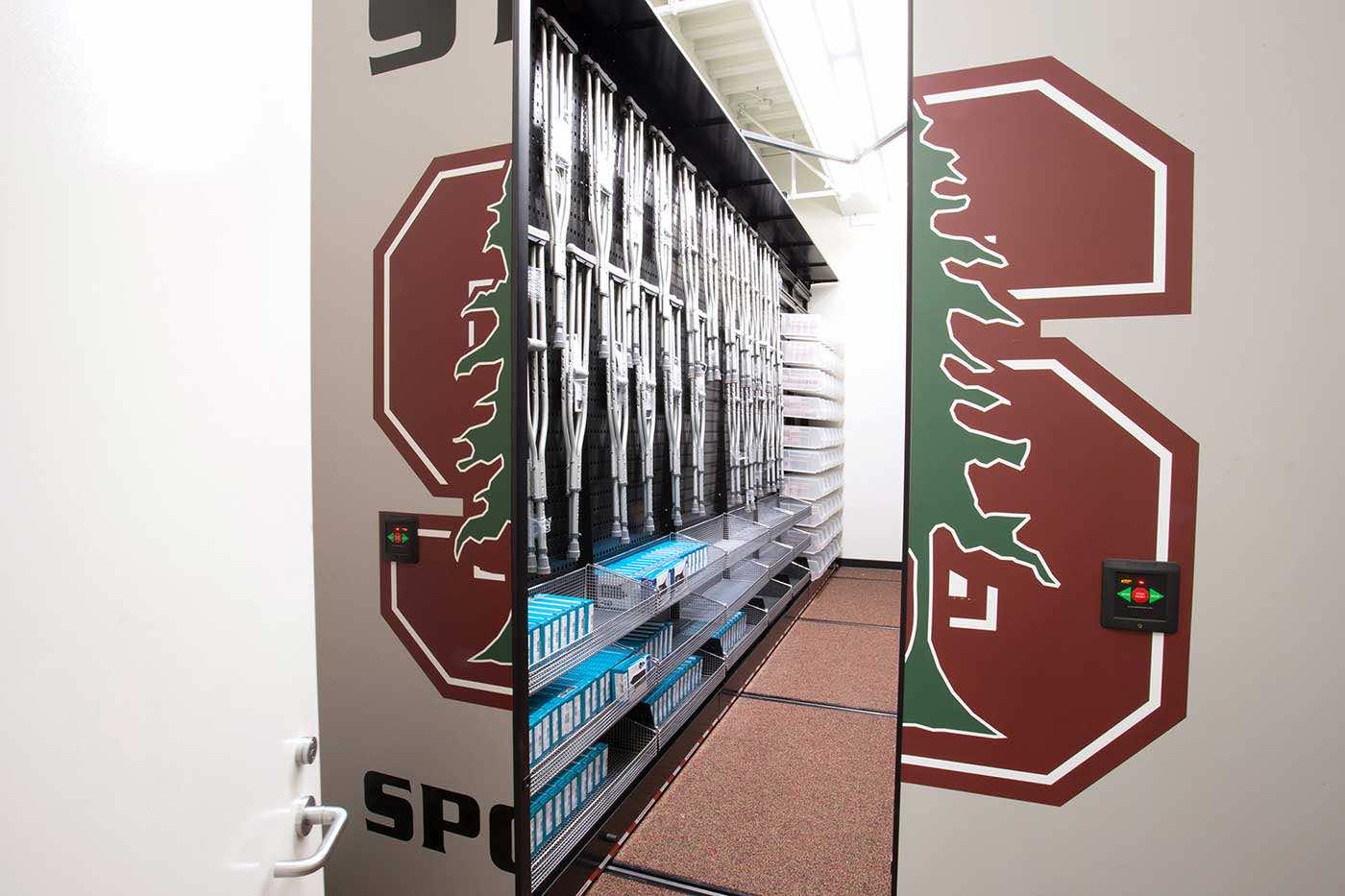
Seeking Better Storage
Stanford University has long been known for brilliant solutions to some of the world’s most pressing problems in medicine, computer science, renewable energy, and a host of other disciplines. But when it came to dealing with supplies and equipment storage for their football program and their on-site sports medicine clinic, the university’s solutions were falling flat.
Sports items were stored in small, cramped spaces throughout the university’s main athletic facility. Busy athletes and staff crammed stuff into any space they could find. And as a result, the facility’s disorganized storage was leading to frustration and wasted time. Without a coherent storage plan, and with no single area large enough to accommodate all the items that needed to be stored, the university’s valuable supplies and equipment were often difficult to find.
When a major renovation project for the university’s main athletic facility presented the opportunity for staff to rethink their storage, they knew they needed some help — so they reached out to Spacesaver for a solution.

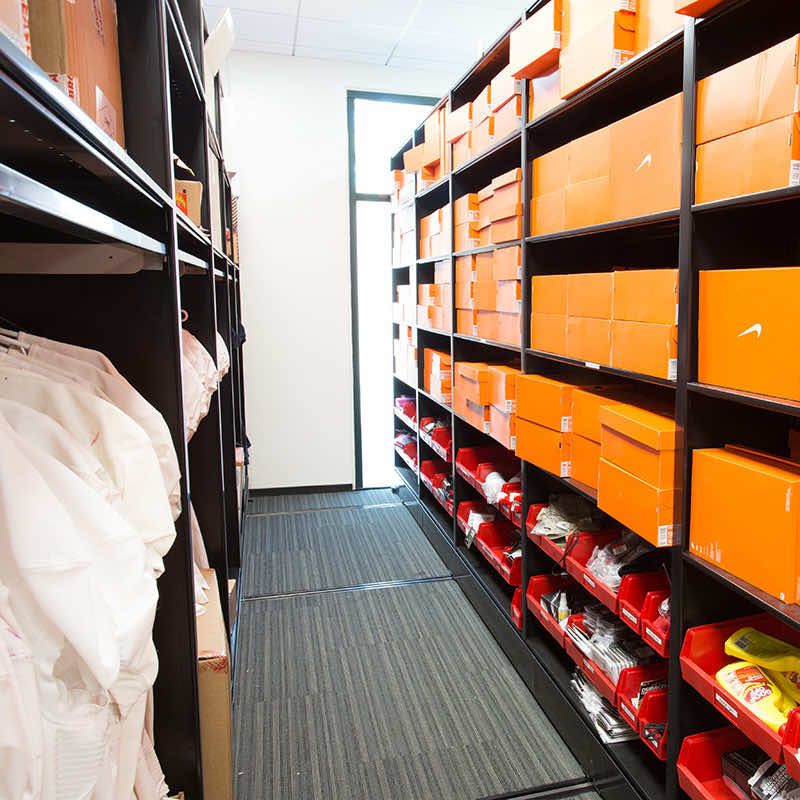
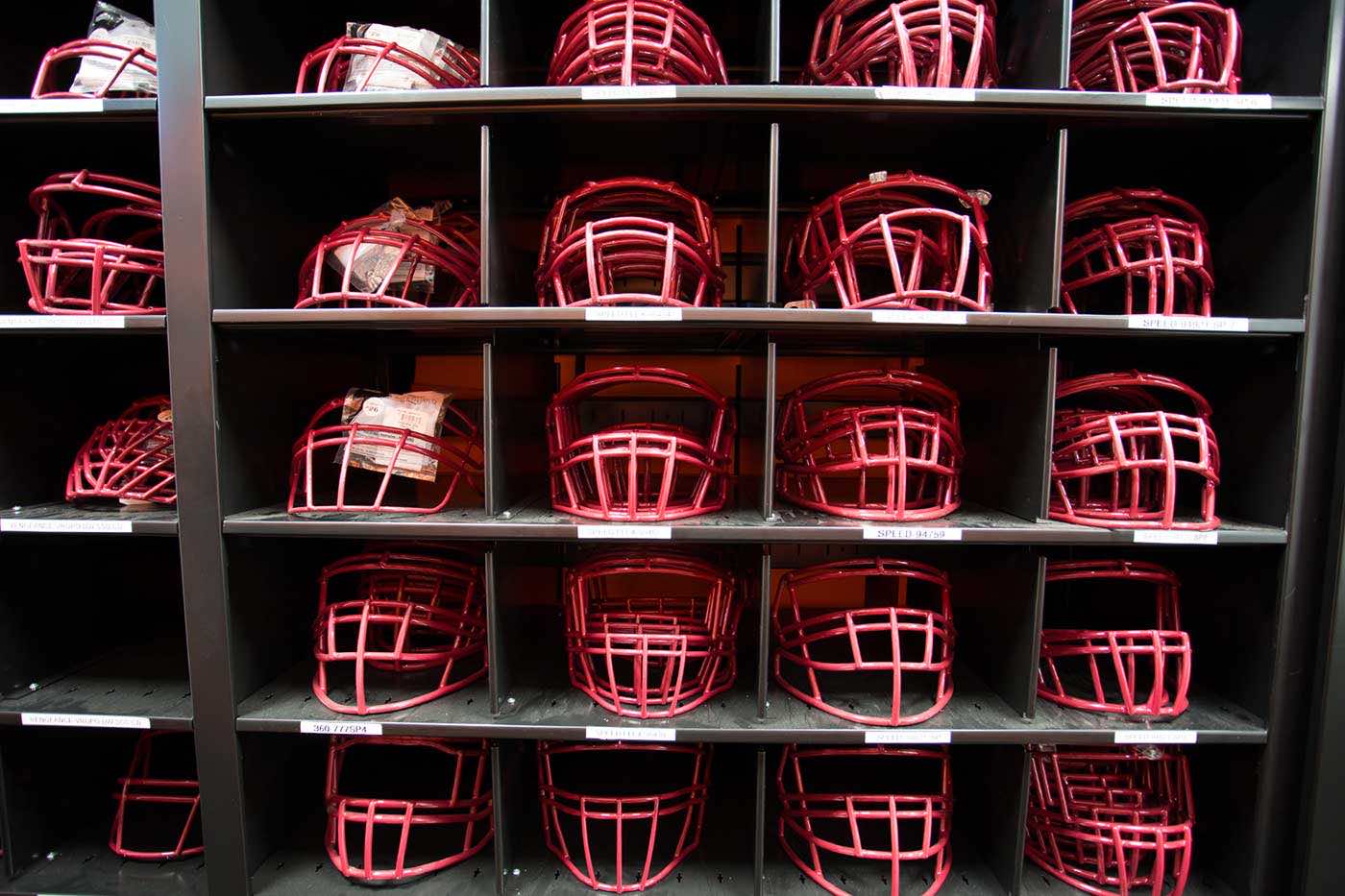
We created a detailed storage plan based on the space available, the items that needed to be stored, usage patterns, and the facility’s anticipated needs in the future.
Assessing Needs
Stanford’s staff and athletes needed to begin with a general strategy. By gaining a thorough understanding of all the items that they needed to store, asking when they needed to gain access to these items, and how often the items would be used, their local Spacesaver consultant gained a thorough understanding of how students and staff used the facility — and how they wanted to use it in the future. Based on their answers, she recommended consolidating items into two central storage areas: one for football and one for sports medicine. Then she conducted a thorough space assessment, measuring the space in all dimensions and noted obstructions like load-bearing columns, ductwork, and sprinklers.
After documenting the space, she turned her attention to the items to be stored. She recorded detailed descriptions of the items that were currently stored at the facility and the exact dimensions of each item. Knowing that the needs of a facility can change over time, she also worked with the staff to determine future storage needs.
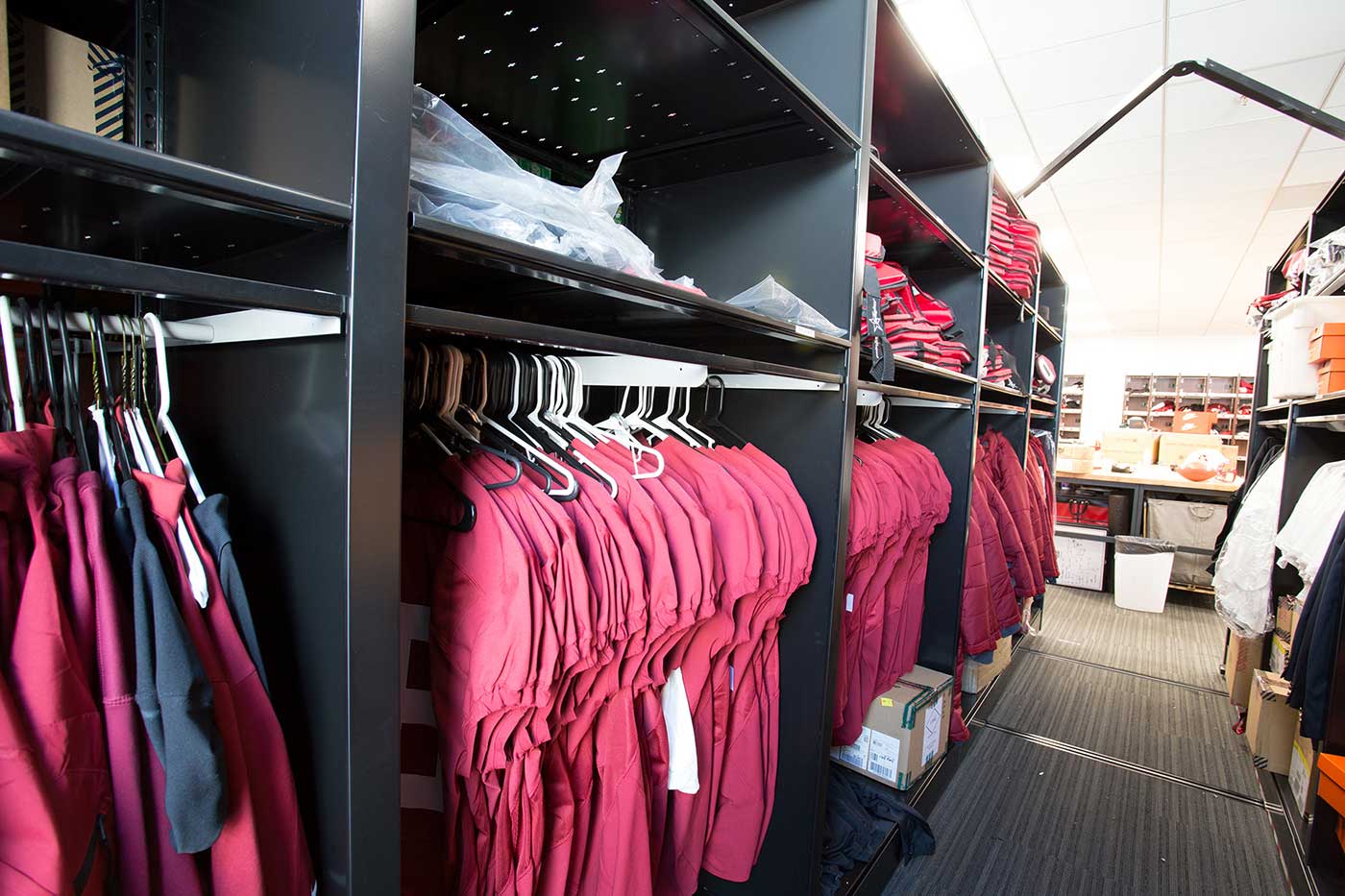
We designed a system to ensure that all items could be stored in the allocated space, and that every item had an accessible home.
A Place for Everything
A crucial step was to create and implement a detailed storage plan to help staff and students understand the possibilities a new space could offer. Because empty shelves have a way of quickly becoming cluttered and disorganized, Stanford staff wanted a plan that would create a clearly marked “home” for all the items that needed to be stored, from crutches to shoulder pads to dress belts. The items needed to be not only easy to find, but also easy to put away — because for busy college athletes, a plan that includes inaccessible or inconvenient storage devolves quickly into no storage plan at all.
Given the limited space, the usage patterns of athletes and staff, and the facility’s current and projected storage needs, powered mobile storage systems formed the core of both areas. A mobile storage system consists of storage units mounted on carriages, which move along rails installed in the floor. Wasted aisle space is eliminated because the shelves can be stored close together. When a user needs to access stored items, he or she can simply press a button on an electronic touchpad to set the units in motion and create an aisle at the point of need. Compact mobile storage eliminates wasted space, allowing for more items to be stored in the same area and providing safe and convenient access for busy athletes and staff.
After the basic storage framework was established, the consultant referred back to the master list of items that needed to be stored in each area and specified hangers, steel pegboard, the FrameWRX modular storage system, and other solutions to ensure that every item would have a home. She estimated the number of linear feet required to store the items in the proper containers, on shelving, or on hangers. Finally, she created a detailed plan to ensure that there would be enough space to accommodate all items. With bins for small items, ample shelf space for boxed items like shoes and bulk supplies, and hangers for uniforms and other garments, the athletic facility’s new storage areas truly have a place for everything.
Storage Playbook
Download for a comprehensive look at football equipment storage solutions.
Storage Playbook
Download for a comprehensive look at football equipment storage solutions.


We regularly consult with clients and their architects about ADA compliance, seismic readiness, and our systems’ fire safety systems.
Consulting on Code Compliance
In addition to their storage challenges, Stanford staff were concerned about other planning considerations. They wanted to be sure the storage systems would be ADA compliant, that the mobile storage carriages and rails would be stable in case of an earthquake, and that the units would not not impede sprinkler function in case of a fire.
Spacesaver affiliates go beyond simply selling shelving and other products to regularly consult with architects and general contractors on seismic considerations, ADA compliance, and fire code compliance. For this project, Spacesaver engineers specified special anchors to secure the rail systems to the floors for better structural stability. This is particularly important in the seismically active San Francisco Bay Area.
Another safety measure that Stanford opted to include in its athletic storage areas is Spacesaver’s System Fire Park. This system can connect to a building’s existing fire alarm system and will automatically open the shelving to even spacing if the fire alarm is triggered. In the event of a fire, the spacing between the shelves allows heat to rise and activate sprinklers. Even spacing also allows for easy viewing between the shelving units.


